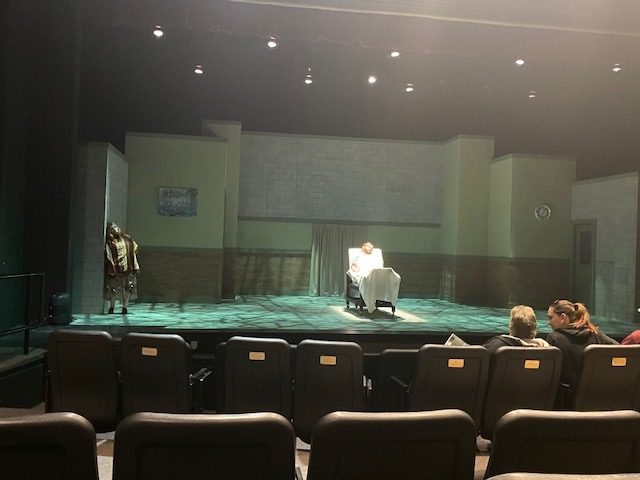Patrick Pierce
–ppierce3@my.apsu.edu
Some of the biggest problems on any campus are commuting and the lack of parking.
APSU is no different. It is not a secret APSU is growing, proudly referred to as Tennessee’s fastest growing university. More students means more commuters. More commuters means more cars and more cars equals less parking for students.
A first response would be to build more parking lots or even a parking garage. Although that would be great, it’s not currently feasible due to economics and space constraints.
Instead, APSU has made an effort to increase available parking for students. However, the new lots are a long walk away from any academic building, including the lots off of Parham Drive or Pettus Park, which are both referred to as “authorized overflow” parking.
These lots are behind the soccer complex, which is on the side of campus where there are no academic buildings.
Since I began attending APSU in 2008, I have never personally seen anyone park in either of these lots to get to class More new parking lots have been built behind the Burt School, on the corner of Farris Drive and Eighth Street.
Although this lot is used more frequently, many if not all academic buildings are literally on the other side of campus from this lot. It is almost easier to drive around for 15 minutes than to walk for 15, especially if it’s raining or cold.
According to the APSU parking map, all student parking is on the outskirts of campus, whereas faculty and residential parking is in the dead center of campus.
According to Maurice Testa, a senior geoscience major, “The white [residential] parking spaces need to be the farthest parking spaces on campus; behind the Dunn Center, off campus or off University Avenue. Those should be for the people that live on campus because if you live on campus, you don’t need your car that often. The people that commute need those parking spaces.”
Testa believes this would be the easiest fix, opening up several parking spots for commuters who travel over an hour to get to campus.
“I would also love for professors to be the ones to park in the back and to take a trolley like major companies and larger campuses do,” Testa said. “You’d have employee parking out in the back where the professors would park and would ride the trolley to the buildings and then when they leave they hop into the trolley to go back.”
Many students only come to campus for one or two classes a day. They aren’t here from 8 a.m. to 4:30 p.m. like many faculty and staff are.
By opening up the red faculty parking spots in the center of campus to students, as they once were, student vehicles would be right outside of their classes and students wouldn’t have to walk across campus.
From my perspective, few students use the Peay Pickup. Redirecting its route to transfer faculty and staff back and forth would be more efficient than having an empty trolley driving aimlessly around campus all day for just a few students that choose to ride it.
Another solution would be to decrease the number of commuters altogether. Carpooling could help reduce the total number of vehicles on campus taking up spots. Taking the public bus, walking or riding a bike to class can also help free up parking spots significantly.
Public transportation in Clarksville is free to APSU students. APSU gives current students a bus pass which can be used for the Clarksville Transit System which is valid for the entire year. Presenting your APSU ID and bus pass grants free transportation anywhere in Clarksville.
Riding a bike to campus might take a bit more effort, but it is economical and great for both the body and environment.
James Martin, a senior forensic biochemistry major, rides his bicycle from his apartment to campus every day.
“I only live about 3.5 miles away from campus, so it’s not too far. If traffic is busy, it takes about 45 minutes, but I don’t have to worry about any parking tickets either,” Martin said.
Martin hasn’t found a problem with biking to campus and always manages to find a bike rack to secure his bike between classes.
After you factor in driving time plus the time it takes to find a spot and walk to class, it can actually be quicker to ride a bike. You can ride your bike to campus and lock it up right next to your class without wasting time with jammed parking lots full of angry and impatient commuters.
Riding the bus, walking or biking to campus isn’t possible for all commuters, but, if some commuters tried this, it could greatly reduce the strain on parking spots around campus.
I understand parking on campus is a problem for most universities. APSU likes to promote growth, athletics and academics, but not so much the basic essentials of campus life for students who don’t live on campus.
If APSU wants to continue being Tennessee’s fastest growing university, solutions to parking problems need to be greatly considered.






